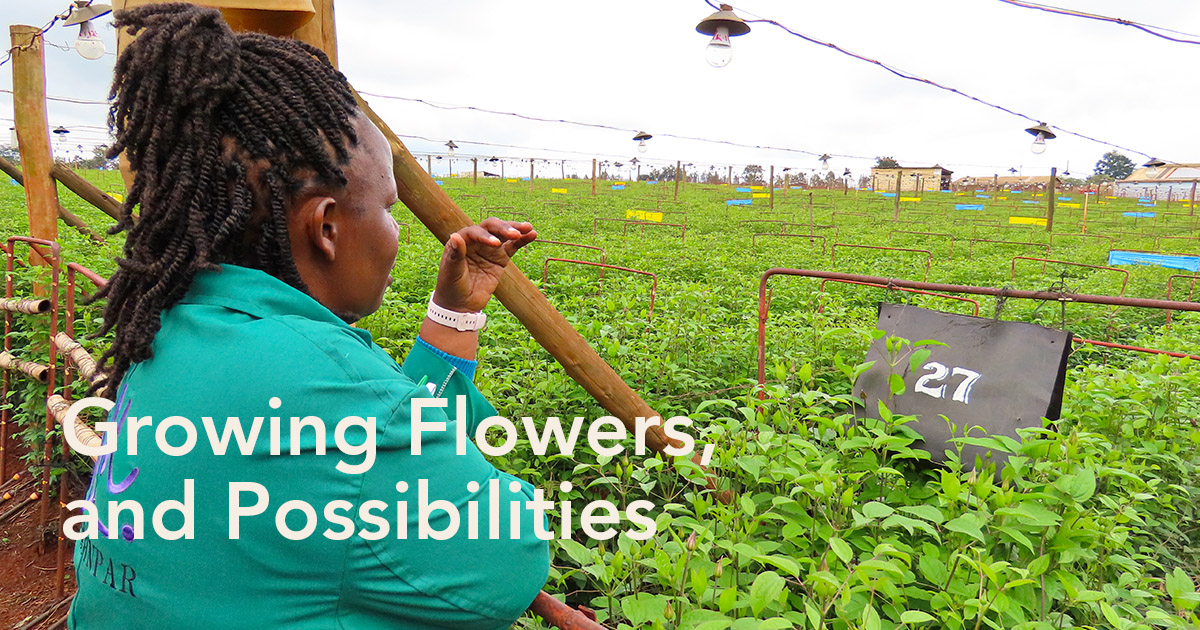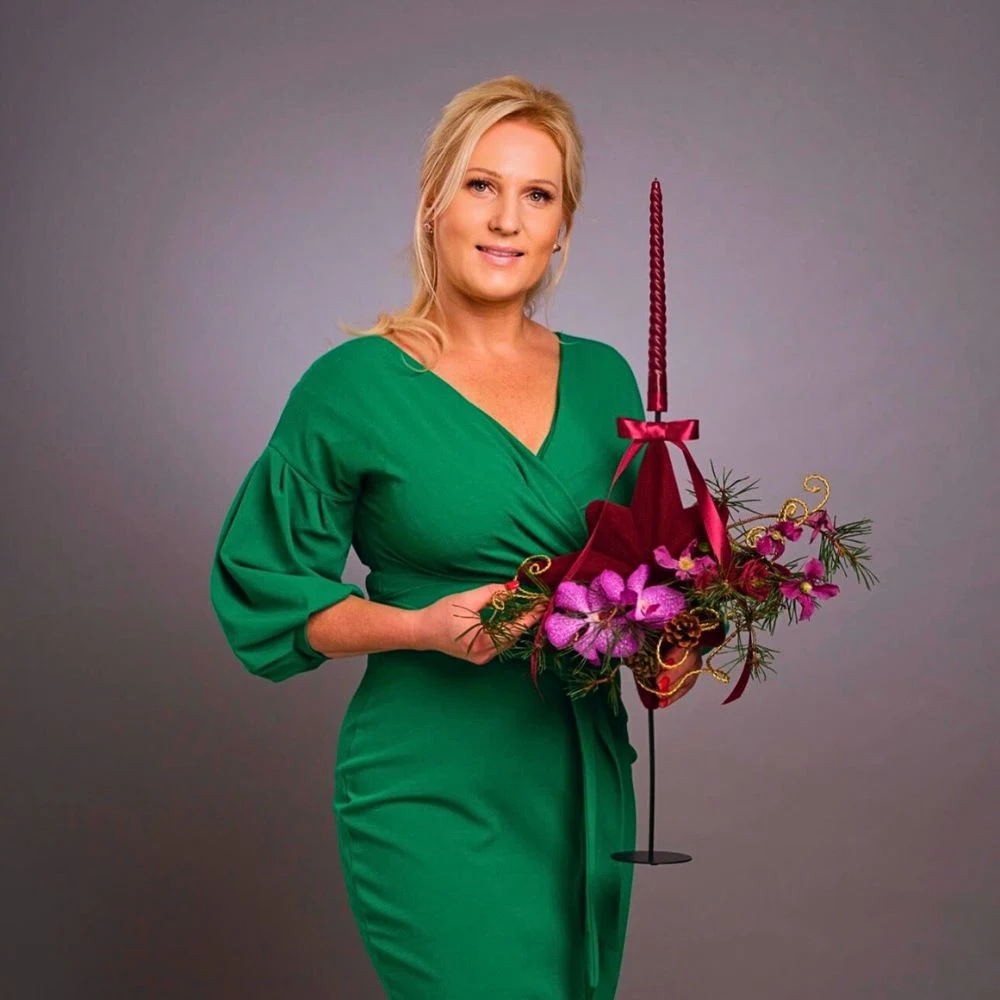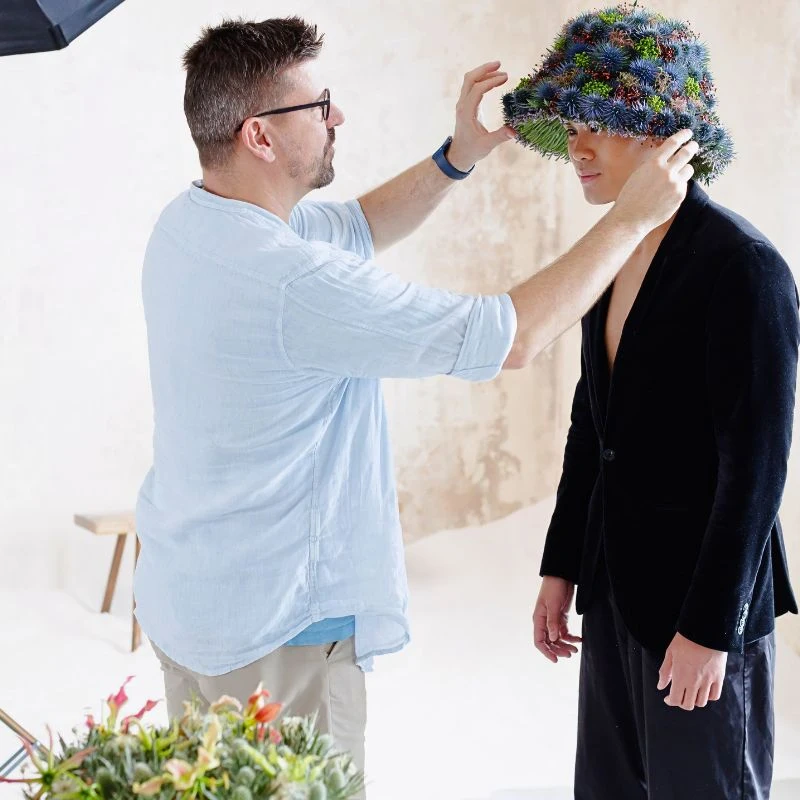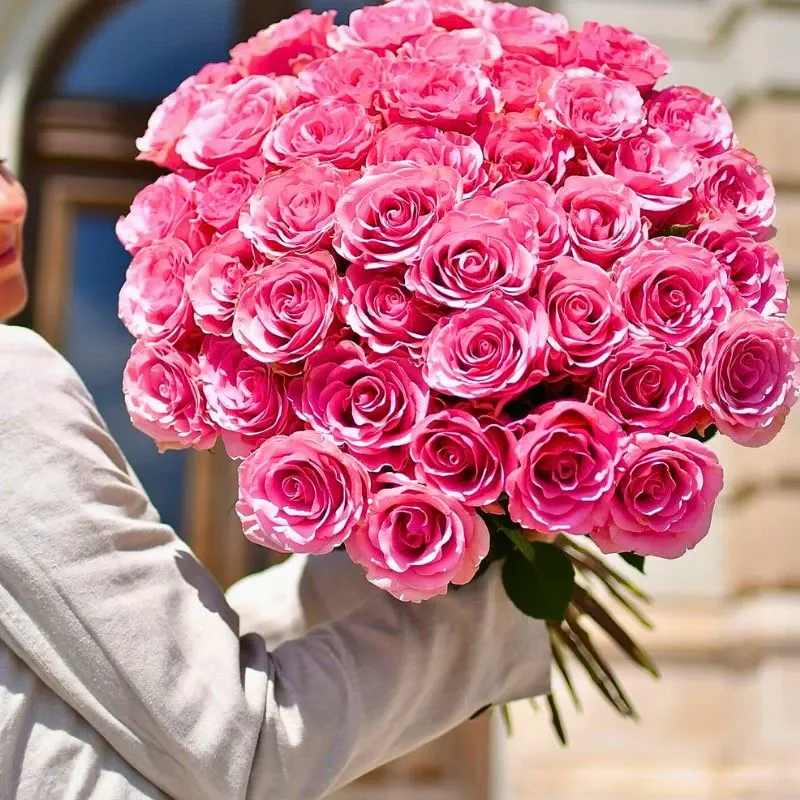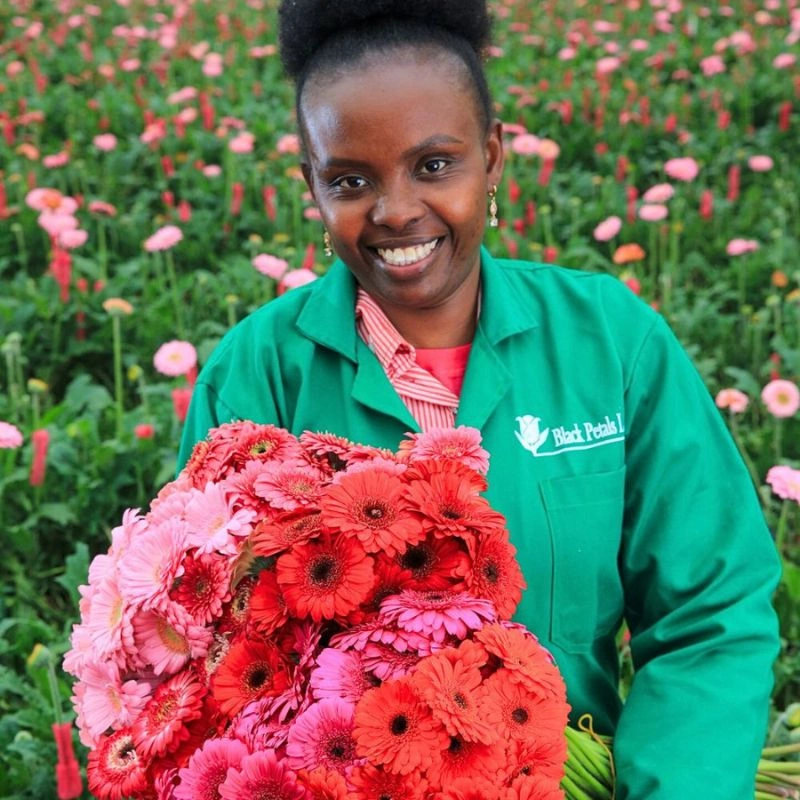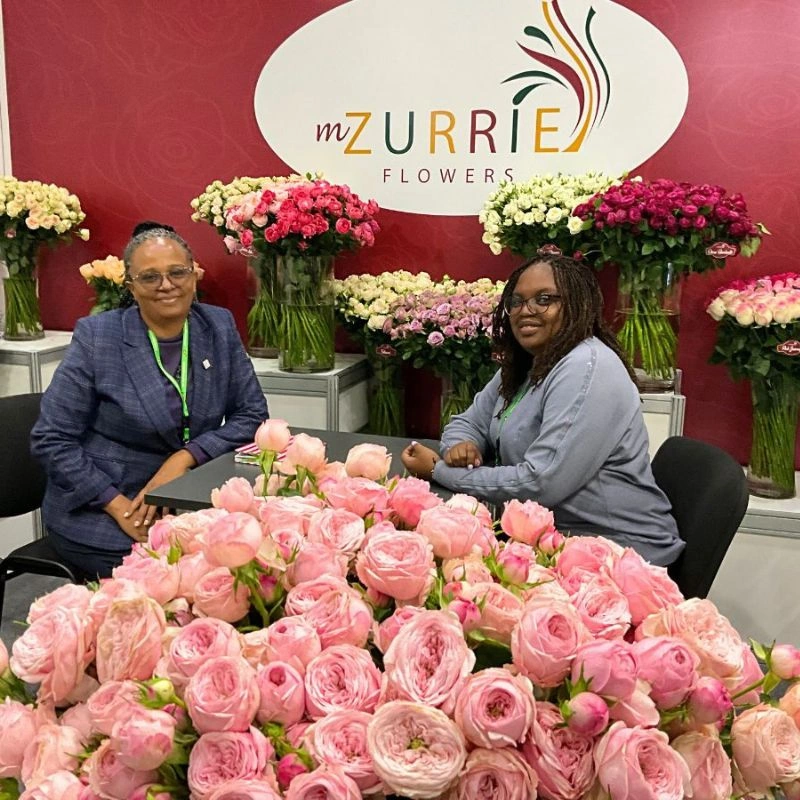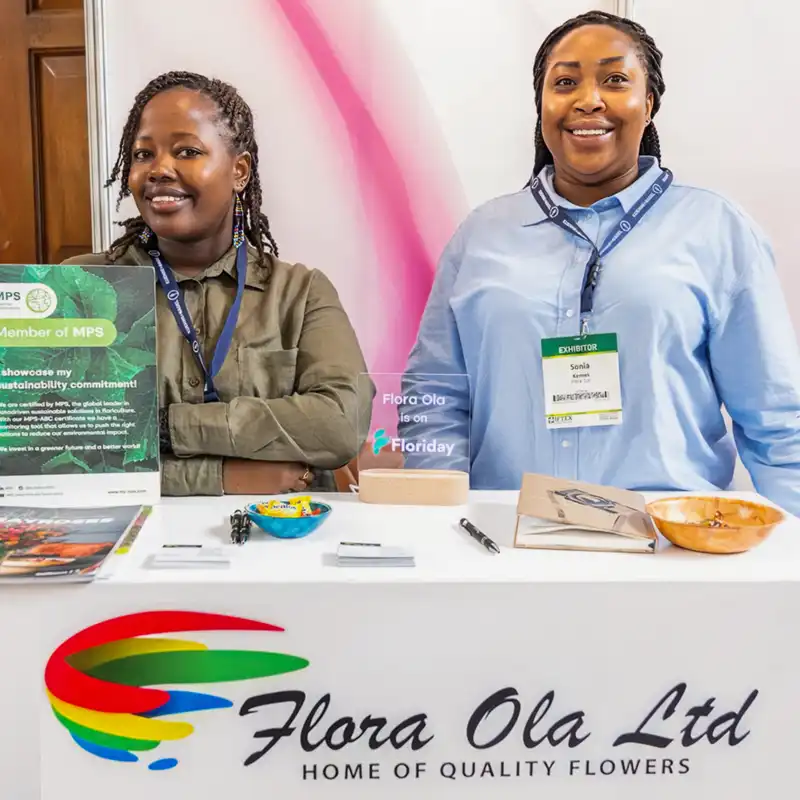Some people land in the flower business by accident. Others grow into it. For Miriam Kimani, it was more like a slow but steady walk into what would become a lifelong calling. She’s one of the few female farm managers in Kenya’s flower industry, overseeing Marginpar’s farm in Juja —and doing so with a calm authority that’s earned her the trust of an entire community.
Join Miriam and her colleague Lewis Komen on a tour around the smallest yet very impressive farm not very far from Kenya's capital, Nairobi.
Miriam Kimani - From Scout to Manager
You wouldn’t spot Miriam right away by her title. She doesn’t do grand entrances or speak in buzzwords. What she does do is lead—quietly, consistently, and with a hands-on approach that makes you realize how much she knows, and how much she cares.

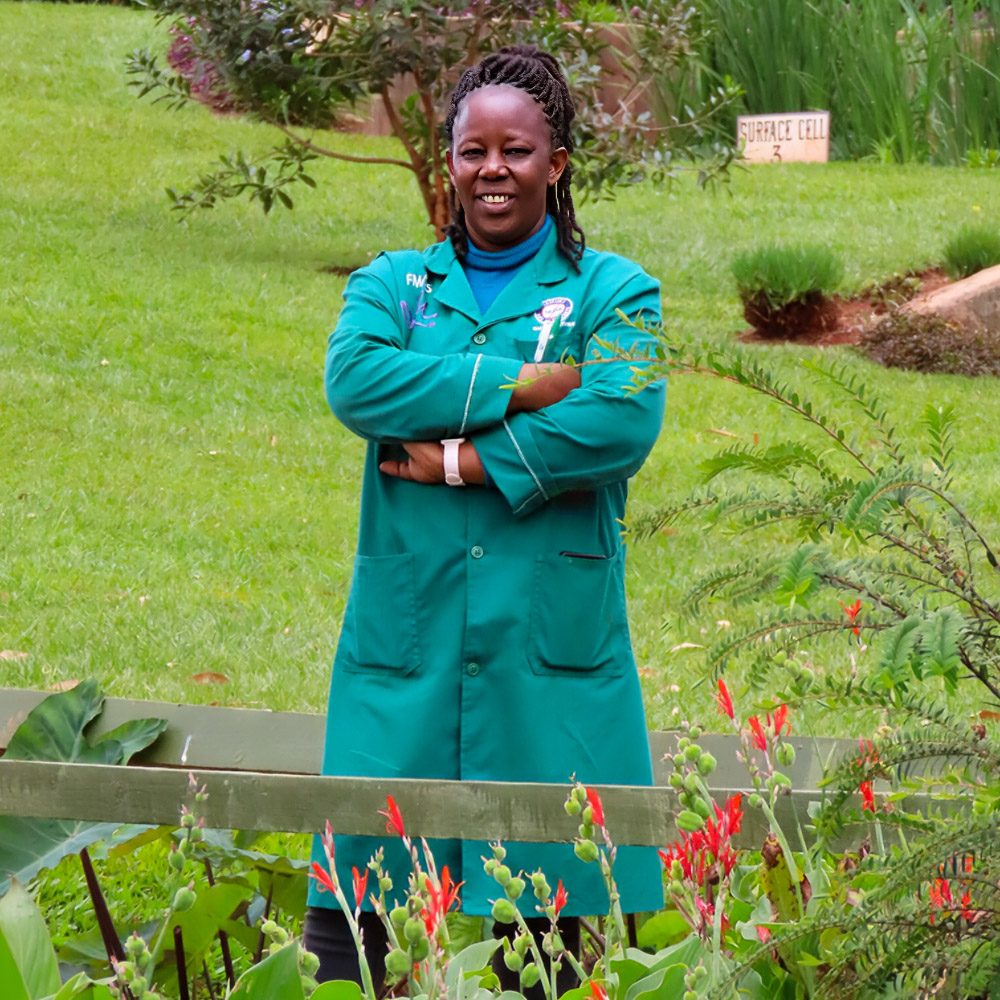
Miriam's story in floriculture began all the way back in 1994, shortly after she finished college. At first, she worked with carnations and Gypsophila. Then, in 2004, she joined Marginpar in Juja as a packhouse manager. At the time, things were small. The standards weren’t what they are now, and the whole farm was still finding its rhythm.
But that changed. Big time.
What’s helped is a system they call 'Hamuka', based on the Japanese 'Kaizen' philosophy of continuous improvement. “Hamuka is just a way of doing things better,” Miriam explains. “You identify waste, you fix it. That’s it. No fancy theory. It works because it’s practical.”
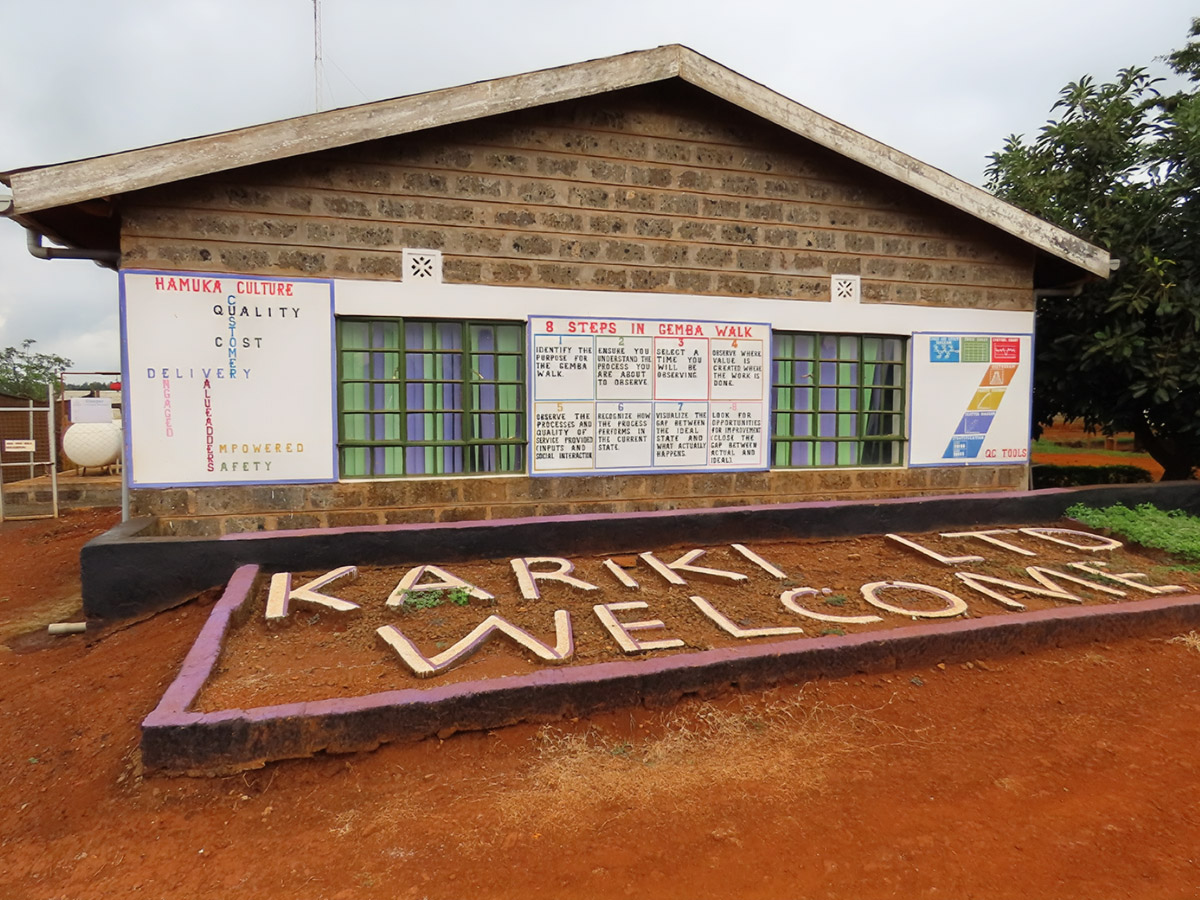
Waste can be anything in a production process, not just flowers that are discarded because the quality is not good enough. There can also be a waste of space, time, and resources, for example. Finetuning and improving this pays off. And it does work. Since 2012, flower production per block at the farm has nearly doubled. Hamuka isn’t just about cutting waste in logistics. It’s about training people, shifting mindsets, and building systems that can run smoothly even when someone’s out sick.
“It’s not about one person,” Miriam says. “If I’m not there, the work goes on.”
A Rare Role for a Woman
In Kenya, women in leadership roles on farms are still the exception. That’s slowly changing, thanks in part to efforts like those by former president Daniel arap Moi, who heavily pushed for girls' education. Miriam is part of that generation of women who were encouraged to go to school, who were told—finally—that they could do more than just manage a household.
Still, the road hasn't always been smooth. “There’s always been some resistance,” she says. “But I tell my daughter the same thing I tell my sons: what a man can do, a woman can do. Maybe even better.”
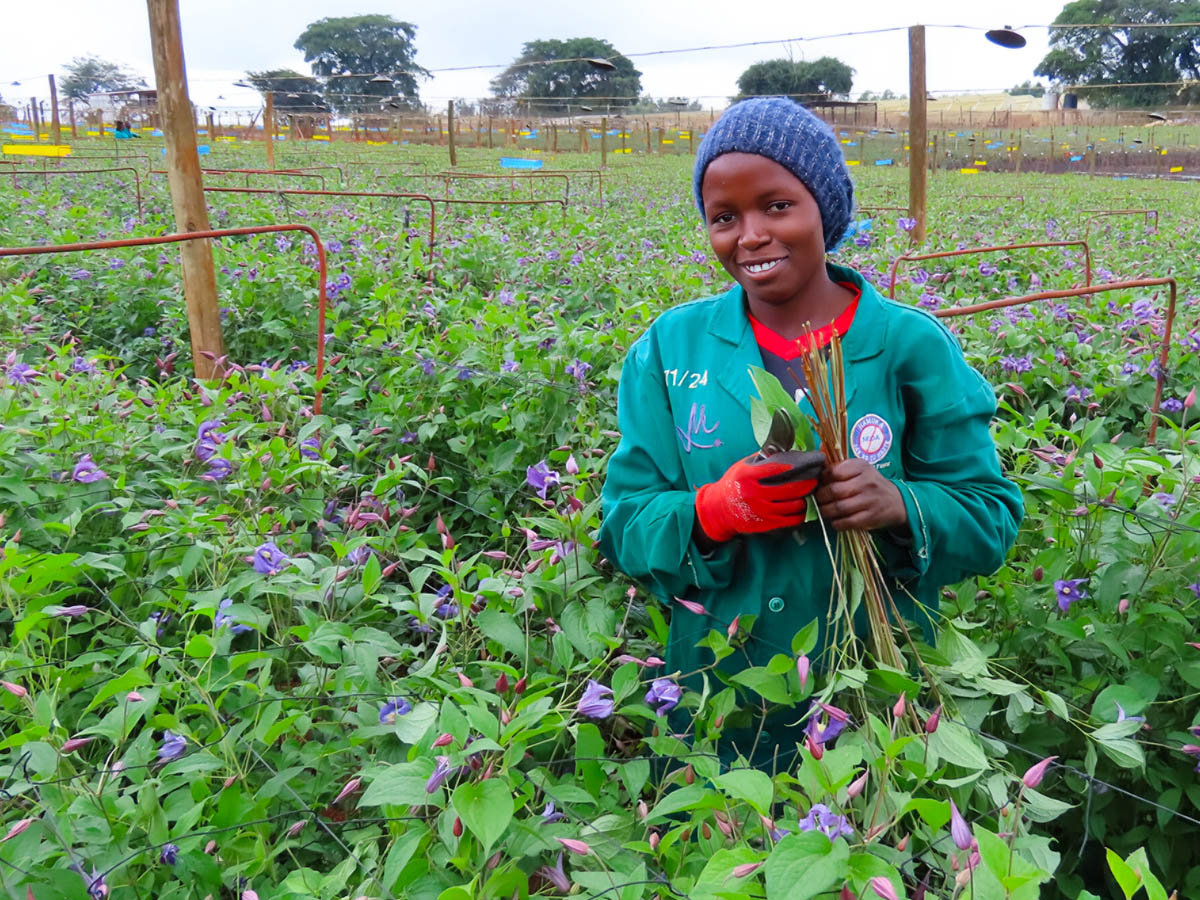
Miriam also acknowledges the cultural gaps that still exist. While the farm itself employs a 50-50 split between men and women, the types of work are still somewhat divided—heavy jobs like bed making and fencing are mostly done by men, while tasks like weeding and planting are largely done by women. Not ideal, but they’re working with what they’ve got and making sure everyone has access to training and opportunity.
“I think now, more than ever, women here are ready,” Miriam says. “They’re not afraid of leadership, and they’re not asking for permission anymore.”
Farming Flowers and Feeding People
One thing that immediately stands out when you walk around the Juja farm: the atmosphere. Workers are focused, but not stressed. There’s a rhythm to the place. A sense of calm.
A lot of that comes down to how people are treated. Everyone on the farm gets breakfast and lunch every day. During COVID, when things got tough, the farm didn’t pull back—it gave more. Food parcels, kale, maize, and even some small cash support. It’s the kind of care that sticks in people’s minds. The kind that builds loyalty.
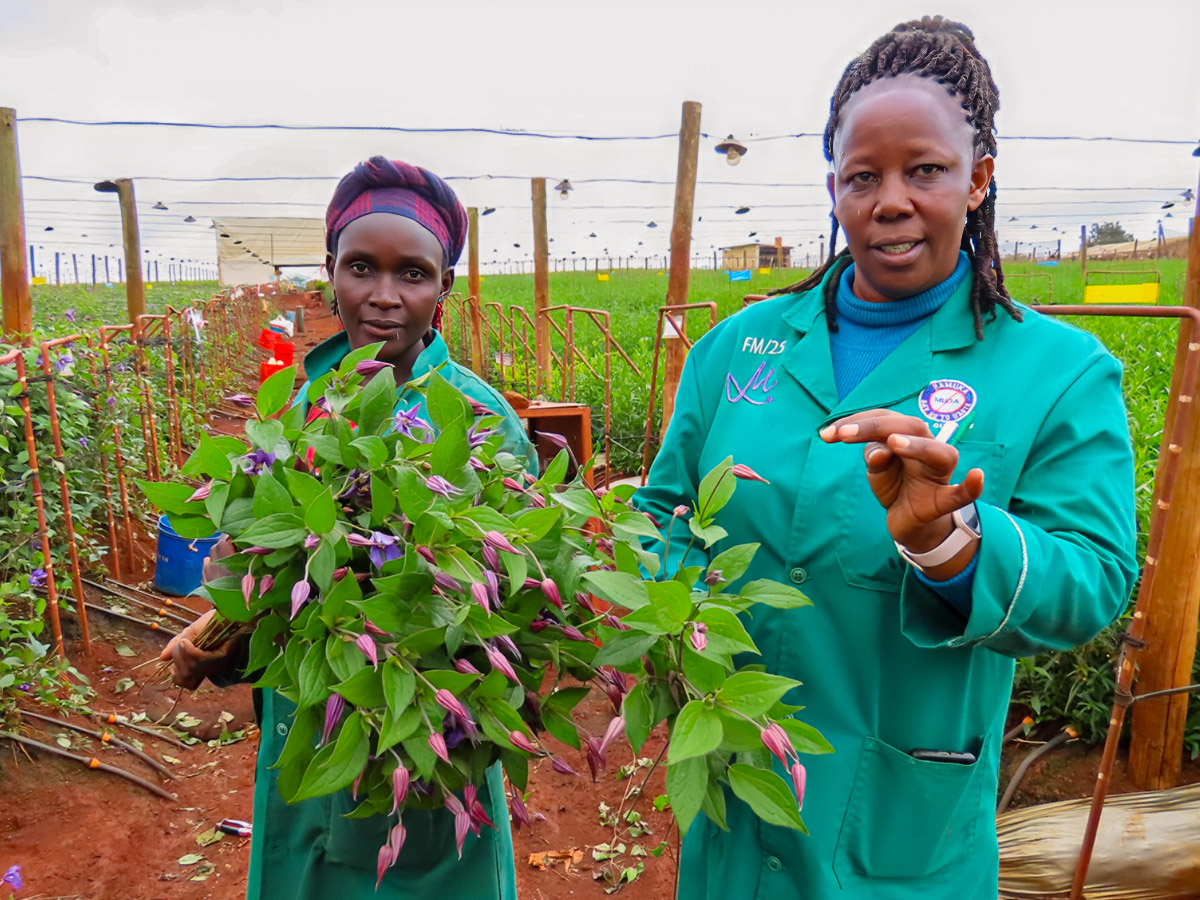
“People want to work here,” Miriam says simply. “We don’t have to push. They come because they know they’re treated well.” And when people are well-fed, motivated, and listened to? You get better flowers. That’s not management theory. That’s just common sense.
Flowers Grown in Cleaner Water Through the Wetland
Marginpar’s commitment to sustainability doesn’t end with the people. Just next to the flower fields is something quite special: a wetland. A constructed one.
If you’re picturing a swamp, think again. This is a carefully designed system that filters wastewater—post-harvest treatments, fertilizers, everything—so it can be reused safely for irrigation. No dumping. No waste. No environmental damage.
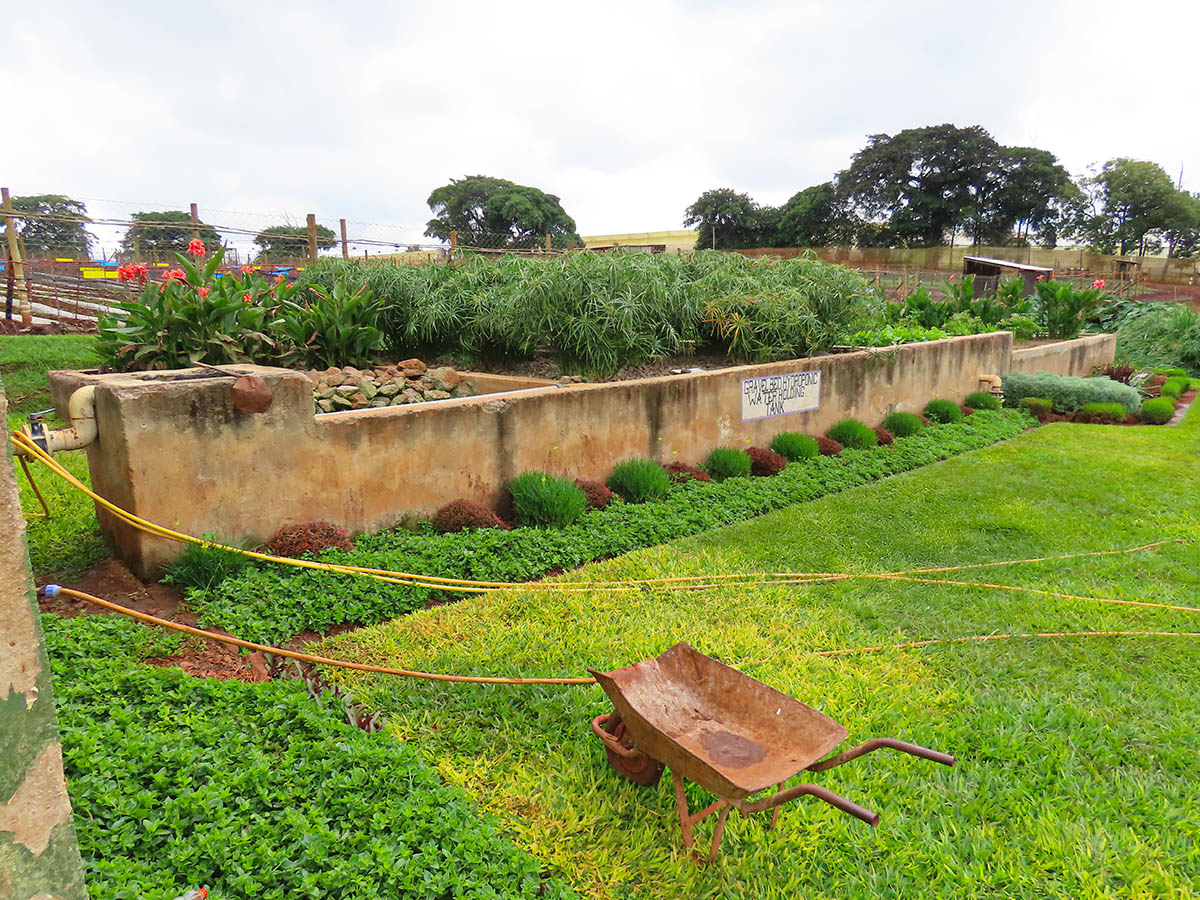
“It’s small,” says Miriam's colleague Lewis Komen, one of the team members who helped design it. “But it works. We test the water every three months. If the frogs that live in it are still happy, we know we’re doing something right.” And it’s not just about filtering. The wetland helps the farm recycle water, reducing the need to pump from boreholes or rely too heavily on rainwater, which, in Kenya’s unpredictable climate, isn’t always reliable.
Alongside this, solar energy powers the farm during the day, covering roughly 30% of their energy needs. “We’re not 100% off-grid,” Lewis admits. “But we’re moving in that direction. The battery tech isn’t there yet. Or it’s just too expensive.”
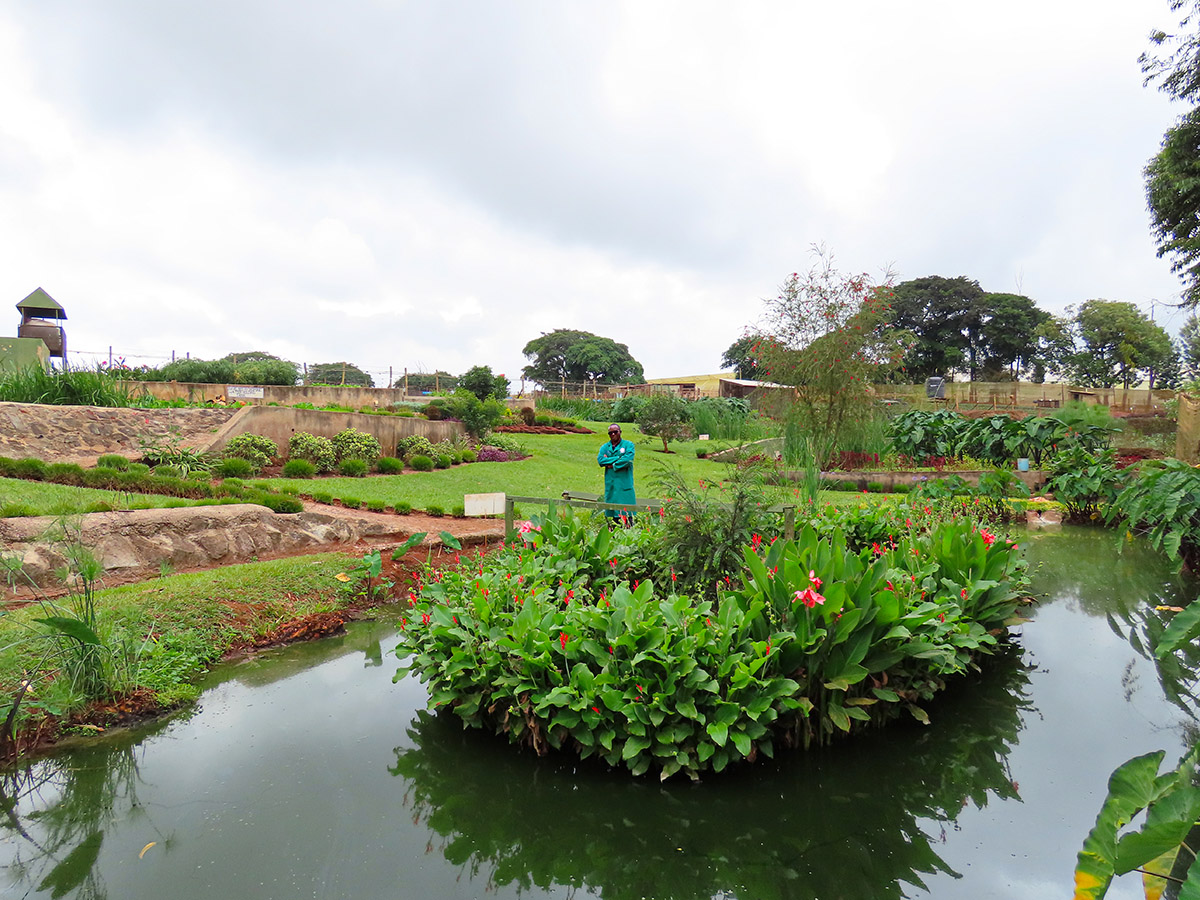
Still, every step helps. The farm’s footprint is shrinking, and it’s doing so in a way that still puts quality flowers first.
Phlox, Asters, Clematis, and the Future
The farm in Juja is Marginpar’s smallest in Kenya—still an imposing 26 hectares—but what they grow is unique. Phlox Icecap, Solidago Carzan Glory, and several Aster varieties. And perhaps the most special of all: several varieties of Clematis. Miriam proudly points out that her team is the only one growing Clematis in all of Kenya. The fields are filled with beautiful Clematis Amazing® Blue Pirouette and Amazing® Kyiv.
Trials are ongoing to expand some varieties to other farms, especially Phlox, which they’re trying to grow in Nakuru. But until then, Juja remains the place where these summer flowers thrive. And thrive they do.
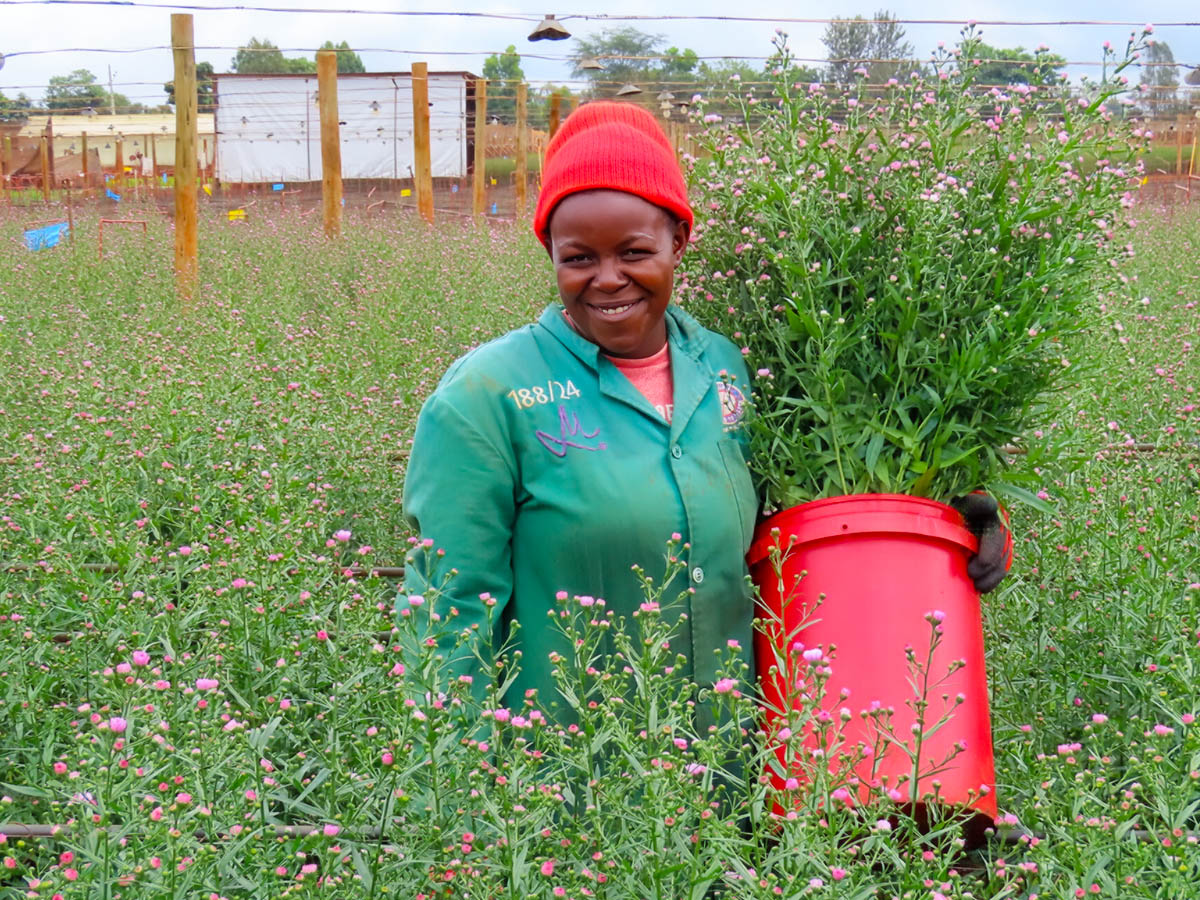
If you see Miriam walking around the farm, happy and proud as a mother hen, it's clear she's not planning on leaving anytime soon. She’s 51 now, still sharp, still leading, still enjoying tending the farm and its people. Official retirement age in Kenya is 60, but if Marginpar wants to keep her around after that? Well, who could blame them?
The Bigger Picture
'Hamuka' is everywhere at Marginpar. On planning boards, on the clothes the workers wear, and painted gaily on the walls of buildings. But, most important of all, the will to improve is in the heart and soul of the people.
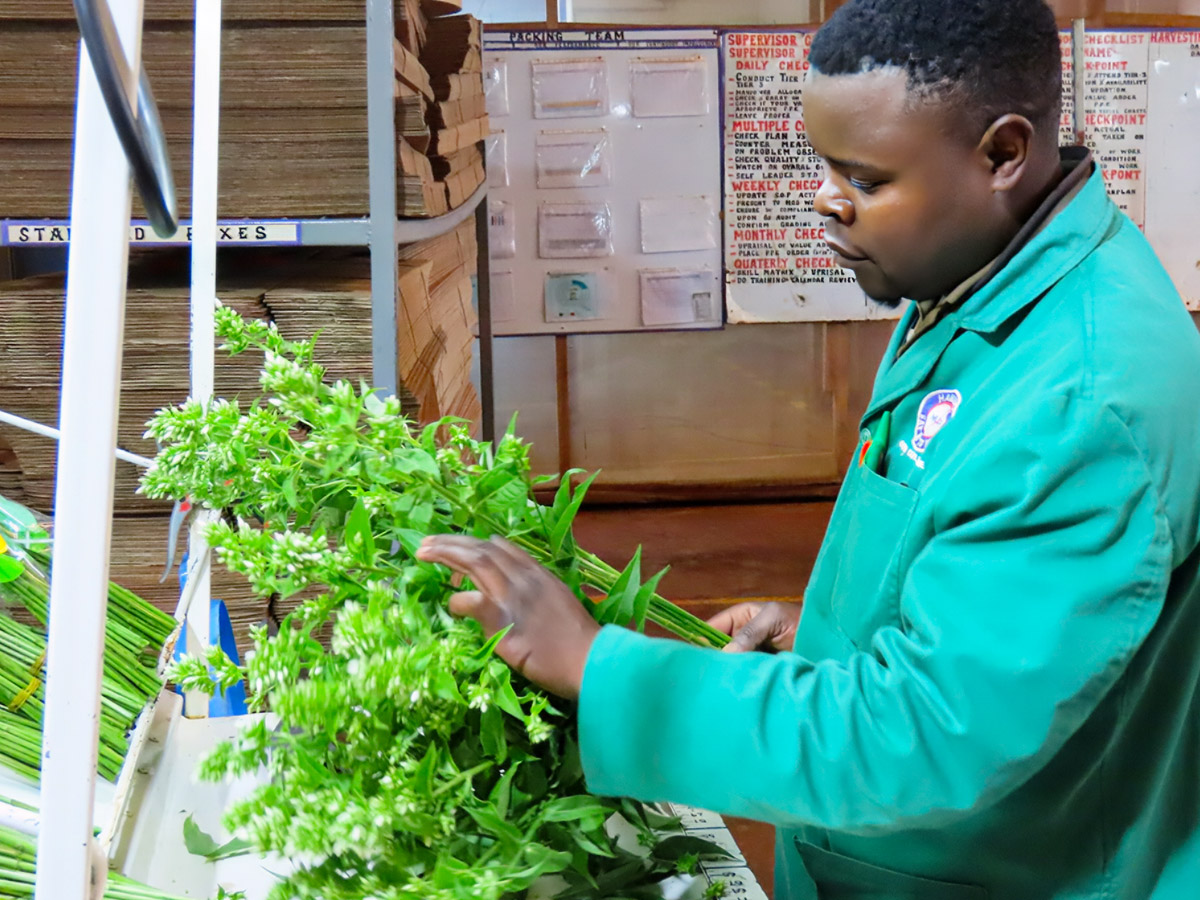
What’s clear when talking to Miriam and walking around the Juja farm is that flowers aren’t just a product here. They’re part of a system—a human, ecological, and cultural system that reflects both tradition and change. From improving irrigation with wetlands, to training teams in lean management, to quietly shifting the narrative around women in agriculture, this farm is more than rows of stems in the sun. It’s a place where people like Miriam Kimani are doing the work—day in, day out—of growing more than just flowers. They’re growing possibilities.

